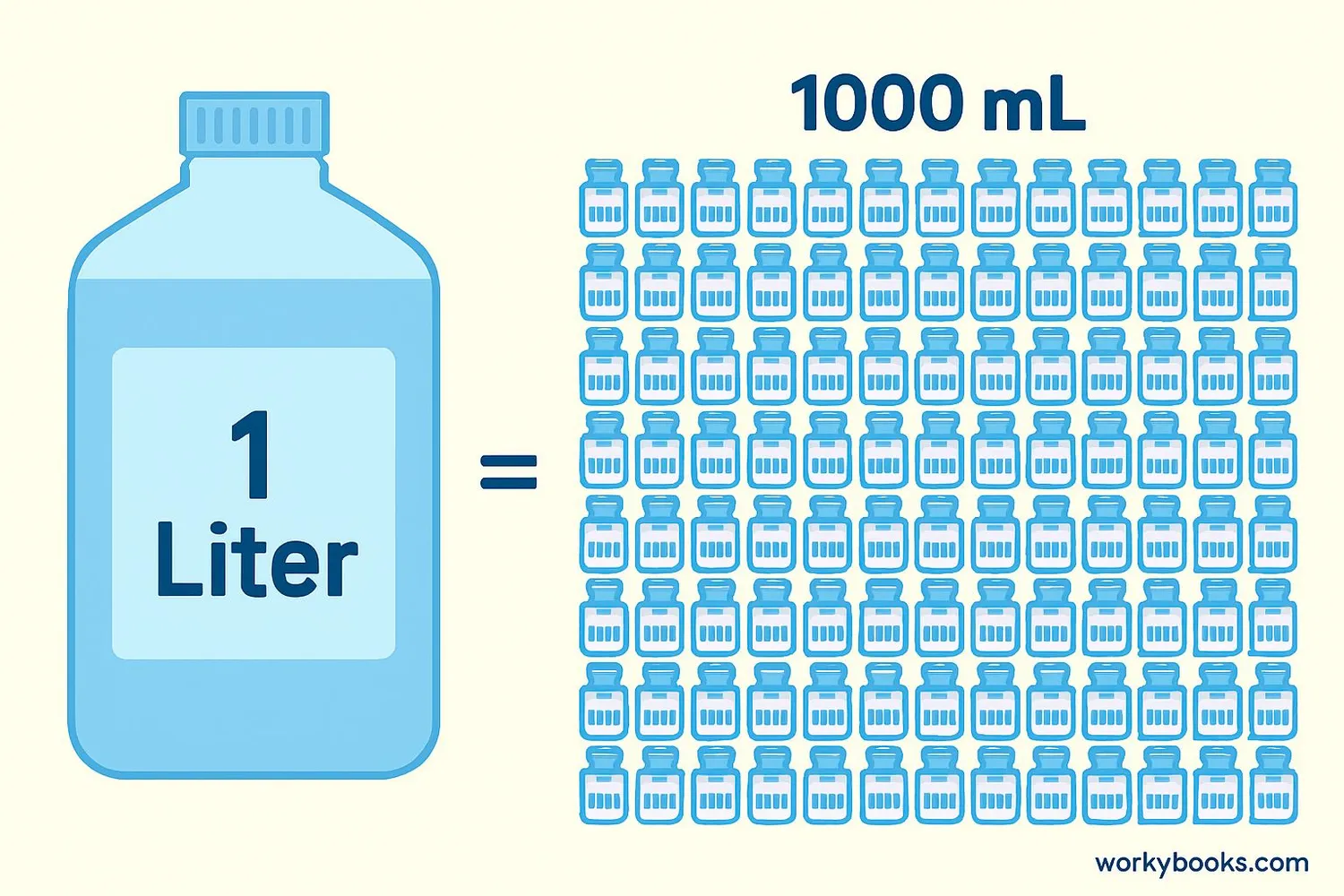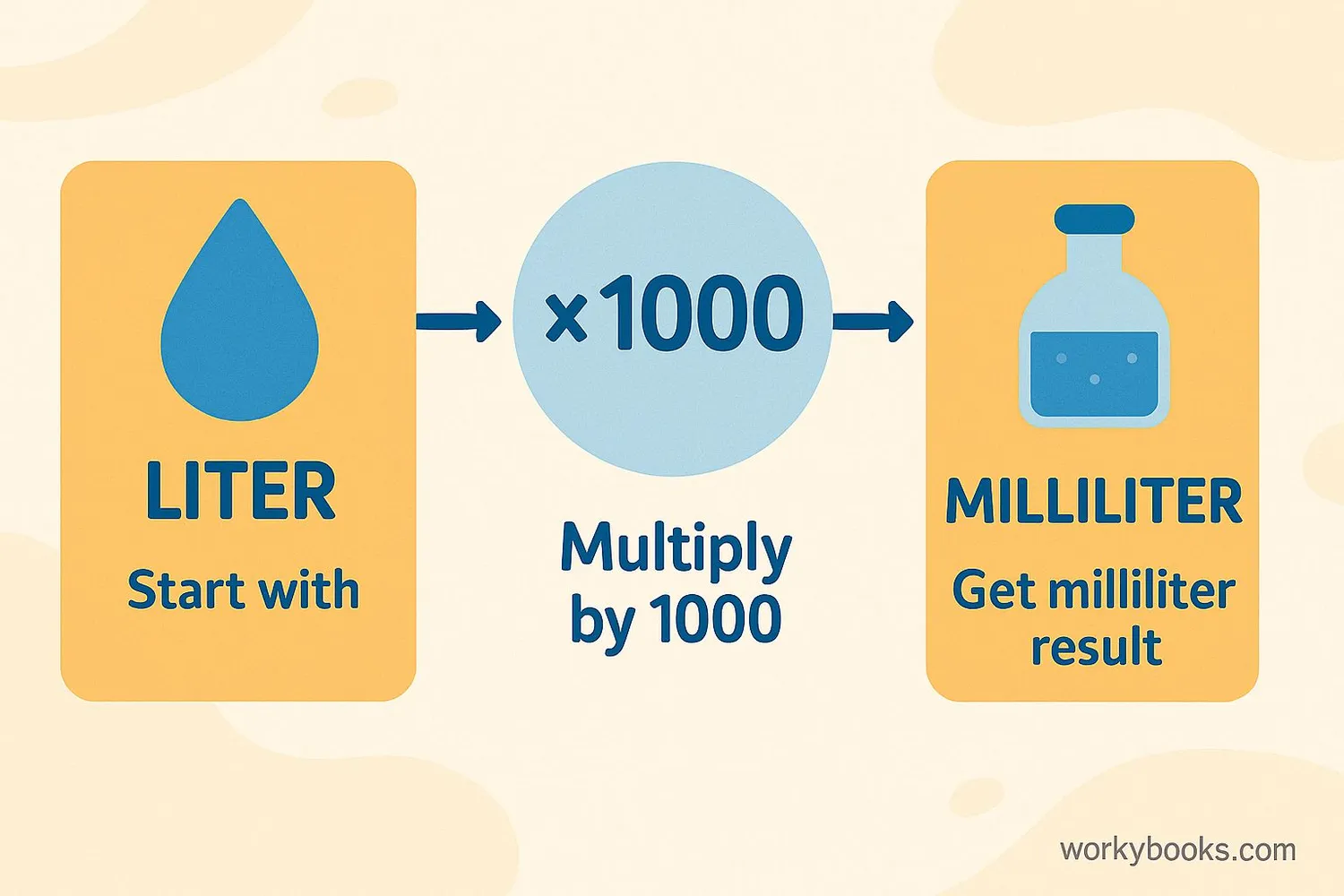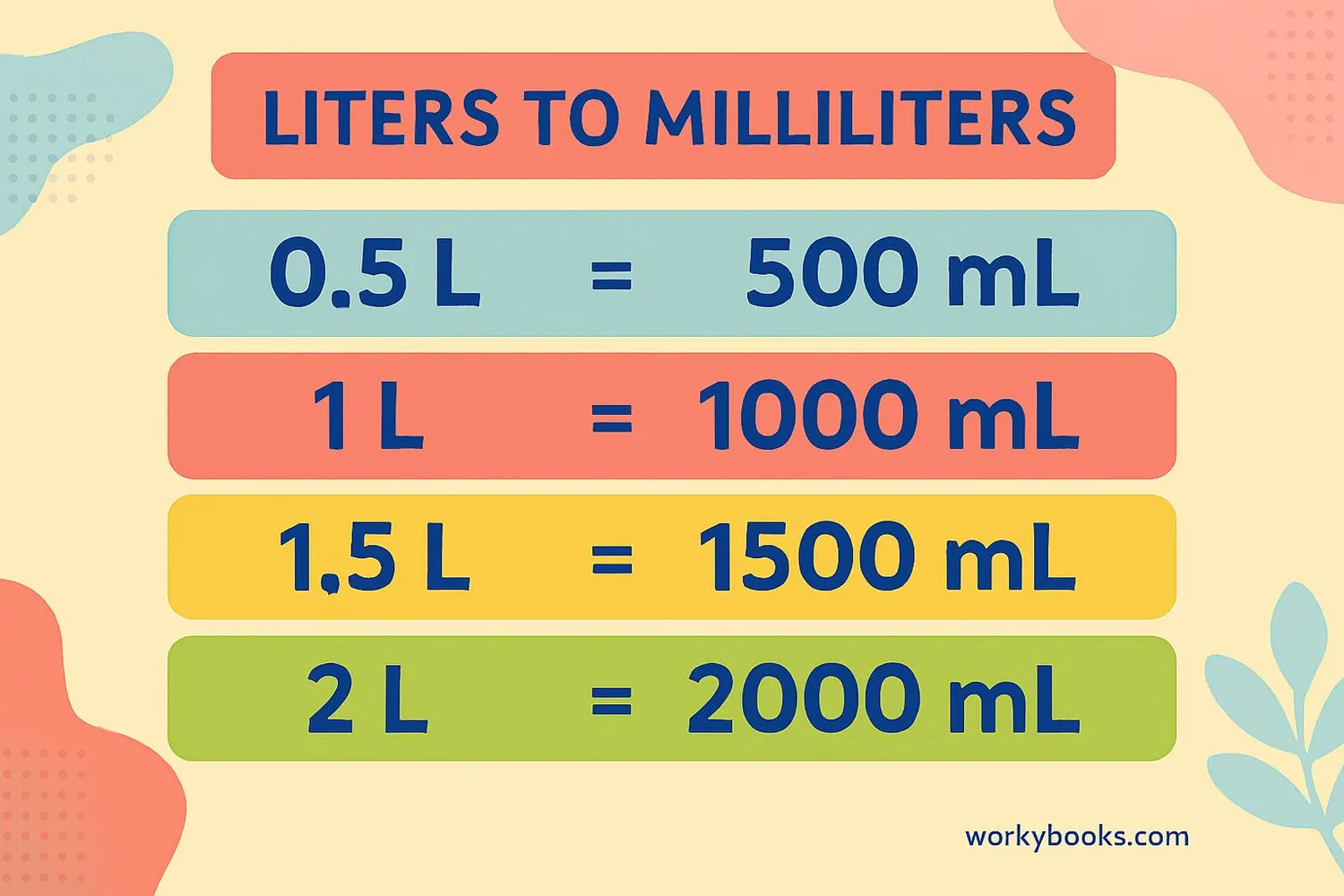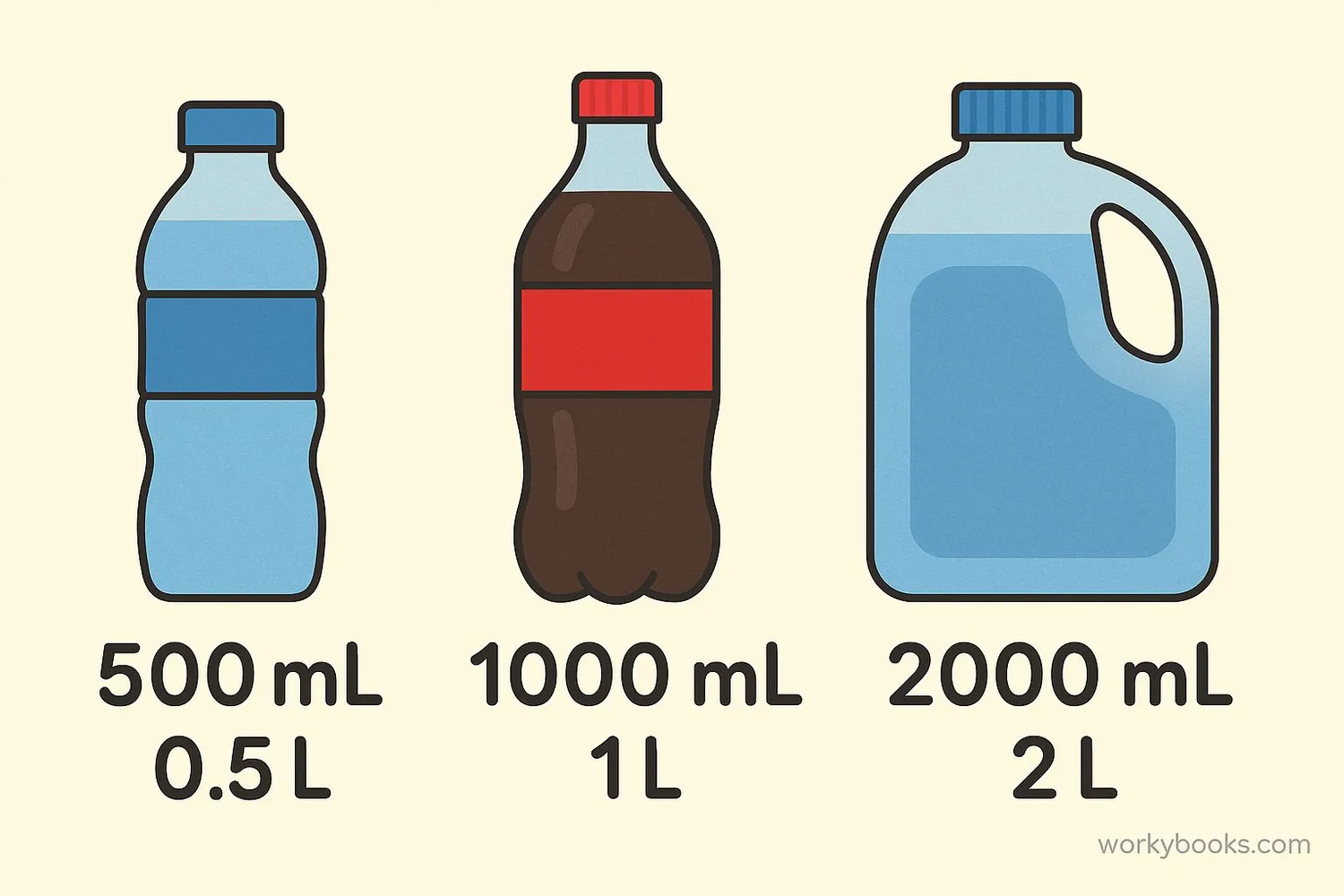Liters to Milliliters (L to mL) - Definition, Examples, Quiz, FAQ, Trivia
Learn to convert between metric volume measurements with easy explanations and practice activities
What is Volume Conversion?

Volume conversion means changing a measurement from one unit to another. In this lesson, we're learning how to convert between liters and milliliters, which are both metric units for measuring volume.
The metric system is based on powers of ten, which makes converting between units simple. One liter equals 1000 milliliters. This means milliliters are smaller units than liters - it takes 1000 milliliters to make 1 liter.
Understanding this relationship helps us measure liquids accurately and solve real-world problems involving volume.
Key Concept
1 liter = 1000 milliliters. This relationship is the foundation for all liter-to-milliliter conversions.
How to Convert Liters to Milliliters

Converting liters to milliliters is simple once you remember the conversion factor:
Conversion Formula
To convert any measurement in liters to milliliters, multiply the number of liters by 1000.
Example: Convert 2.5 liters to milliliters
Step 1: Start with the measurement in liters → 2.5 L
Step 2: Multiply by 1000 → 2.5 × 1000
Step 3: Calculate the result → 2500 mL
So 2.5 liters equals 2500 milliliters. It's that simple!
Remember
When converting liters to milliliters, your answer will be a larger number because milliliters are smaller units than liters.
Liters to Milliliters Conversion Charts

Conversion charts help us quickly find equivalent measurements without calculating each time. Here are two useful charts for converting liters to milliliters:
Liters to Milliliters Conversion Chart
| Liters (L) | Milliliters (mL) |
|---|---|
| 0.1 L | 100 mL |
| 0.2 L | 200 mL |
| 0.3 L | 300 mL |
| 0.4 L | 400 mL |
| 0.5 L | 500 mL |
| 0.75 L | 750 mL |
| 1 L | 1000 mL |
| 1.5 L | 1500 mL |
| 2 L | 2000 mL |
| 2.5 L | 2500 mL |
| 5 L | 5000 mL |
| 10 L | 10000 mL |
Common Container Sizes Conversion Chart
| Common Container | Liters (L) | Milliliters (mL) |
|---|---|---|
| Small water bottle | 0.5 L | 500 mL |
| Standard water bottle | 1 L | 1000 mL |
| Soda bottle | 2 L | 2000 mL |
| Cooking oil bottle | 0.946 L | 946 mL |
| Milk carton | 1.89 L | 1890 mL |
| Large juice bottle | 3.78 L | 3780 mL |
Chart Tip
Notice how each additional liter adds 1000 milliliters? You can use this pattern to estimate conversions!
Real-World Examples

Let's practice conversion with some real-world examples:
Example 1: A water bottle contains 0.5 liters of water. How many milliliters is this?
Solution: 0.5 × 1000 = 500 milliliters
Example 2: A recipe calls for 1.2 liters of milk. How many milliliters of milk do you need?
Solution: 1.2 × 1000 = 1200 milliliters
Example 3: A large soda bottle contains 2000 milliliters. How many liters is this?
Solution: To convert milliliters to liters, divide by 1000: 2000 ÷ 1000 = 2 liters
Example 4: A medicine dosage is 5 milliliters. The bottle contains 0.1 liters. How many doses are in the bottle?
Solution: First convert 0.1 liters to milliliters: 0.1 × 1000 = 100 mL. Then divide total milliliters by dosage: 100 ÷ 5 = 20 doses.
Practice converting measurements you see around you - your drink bottle, cooking ingredients, or medicine dosages!
Conversion Tip
To convert milliliters back to liters, divide by 1000 instead of multiplying.
Conversion Practice Quiz
Test your conversion skills with this 5-question quiz. Choose the correct answer for each question.
Frequently Asked Questions
Here are answers to common questions about liters and milliliters conversion:
Measurement Trivia
Discover interesting facts about volume measurement:
Origin of the Liter
The liter was originally defined in 1795 as one cubic decimeter (10 cm × 10 cm × 10 cm). The name comes from a French unit called "litron," which was a unit of volume that dated back to the medieval period.
Water's Special Property
One liter of pure water at its maximum density (at about 4°C) has a mass of exactly one kilogram. This relationship between volume and mass was part of the original design of the metric system.
Largest Container
The world's largest container ship can carry over 24,000 TEU (twenty-foot equivalent units). If all these containers were filled with water, they would hold about 480 million liters—enough to fill 192 Olympic-sized swimming pools!
Human Volume
The average human body contains about 40 liters of water. That's 40,000 milliliters! Our blood volume alone is approximately 5 liters, which constantly circulates through our bodies.





